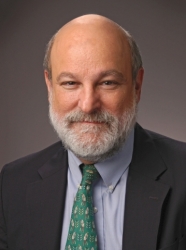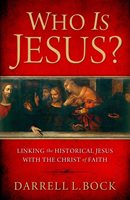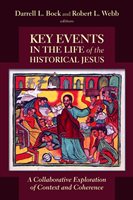Even those who do not keep up with critical New Testament scholarship have noticed that every year around Easter and Christmas the news media reports some “new” information that purportedly undermines the historical claims of the Gospels, and we hear yet again that we just cannot believe this or that about Jesus, because “the evidence” just doesn’t support it.
Of course it has always been the instinct of the church to accept as true all that the Bible affirms. It is, after all, the Word of God. And for many of us it is also our instinct, then, to dismiss the claims of the critics with a confident, “Let God be true, and every man a liar.”
Fair enough. But it’s also of interest for us when believing scholars bring all “the evidence” to bear on the discussion to corroborate once again the Bible’s claims. And it is of added interest when exceptionally ambitious believing scholars decide to play by the critic’s rules in order to beat them at their own game.
Books of this type have appeared here and there over the years, and this is just what Darrell Bock (Research Professor of New Testament Studies at Dallas Theological Seminary) does for us in his Who is Jesus? Linking the Historical Jesus with the Christ of Faith. Playing by the rules dictated by critical unbelief he demonstrates again the truthfulness of the Gospel writers in their record of the historical Jesus. Dr. Bock is here to tell us about this significant work that he and his colleagues have produced.
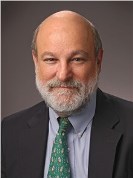 Fred Zaspel:
Fred Zaspel:
First, describe for us the issue you are addressing in this book. What is “the Jesus Quest,” and what is the supposed “ditch” that you are seeking to cross?
Bock:
The Jesus quest is an attempt to argue how we can know what the Bible says about Jesus is authentic using a standard of corroboration. It is a skeptical take on how to look at Jesus and Lessing’s ditch is the idea we cannot cross from the biblical portrait of Jesus back to the real Jesus because there is no way back to the real Jesus from the sources we have.
Zaspel:
To be clear, what, in that view, is the difference between the “biblical” and the “historical” Jesus? Just what is it about the biblical portrait of Jesus they are trying to avoid?
Bock:
There is too much diversity in how the historical Jesus is handled to generalize about how “they” are doing. But many do contend that Jesus is merely a prophetic figure of some kind and is not as unique as the biblical portrait suggests.
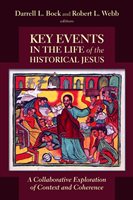 Zaspel:
Zaspel:
This book is the result of a team effort – identify the “team” for us, and describe for us how this work came about.
Bock:
The IBR Jesus group met each summer for a decade to cover 12 key events in Jesus’ life they claimed could be argued for using corroboration standards often applied in historical Jesus discussions. It attempts to show that even skeptical standards can yield a sense of who Jesus is. We published a full technical study in an international NT series called Key Events in the Life of the Historical Jesus. The popular book Who Is Jesus? is a 200 page version of that 800 plus page book.
Zaspel:
Devout believers very naturally accept the Evangelists’ presentations of Jesus as historically accurate. But for the Questers, the thinking is reversed, right? Unless their reports can be demonstrated to be true, they cannot be accepted as such. And so a certain set of “rules” have been developed by which we can determine the historicity of their accounts of Jesus. Is that right? Can you explain something to us about these “rules”?
Bock:
Yes, the goal is to use rules that can argue for some form of corroboration. So “multiple attestation” looks at multiple source levels or literary forms that can confirm Jesus did certain kinds of things. “Ambiguity” argues that if the church had made something up the product would have been clear and not ambiguous. “Embarrassment” argues the church would never make up such a detail. The betrayal of Judas, Jesus calling Peter Satan, or women being the prime witnesses of the empty tomb are examples. “Double Dissimilarity” argues that if something is not quite like the early church’s expression and not like Judaism, then that must be Jesus. These are but a few of the rules.
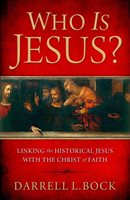 Zaspel:
Zaspel:
Give us an example of how these rules serve to corroborate, say, the account of, say Jesus’ baptism by John the Baptist.
Bock:
John’s baptism of Jesus is multiply attested in two distinct versions as seen in Mark and John. To be clear, this is not how many times the account appears across the gospels but in how many versions. Matthew and Luke’s version is seen to be rooted in Mark’s presentation. John’s baptism also is unique from both Judaism and the way the early church saw baptism. It simply affirmed readiness for the Lord’s salvation to come in a one time baptism. Judaism had no such rite. The church’s baptism pictures cleansing of salvation. These criteria point to the authenticity of that event. Embarrassment argues that Jesus being baptized by John could be misunderstood say Jesus sinned. The church would not have created such an impression. That this event is authentic is important because some argue Jesus presented an ethic only and not a hope of deliverance with Judgment. If Jesus endorsed John’ project by getting baptized by him (which is what his accepting baptism would have meant), then Jesus shared John’s view about God and judgment.
Zaspel:
You apply these rules to a dozen or so incidents in the life of Christ – his baptism, the choosing of the twelve, his scandalous associations, Sabbath controversies, the triumphal entry, and so on. Explain the common theme(s) that arises in all these episodes and the portrait that emerges. What kind of person does Jesus claim to be?
Bock:
The most important theme is how Jesus shows himself to stand at the center of God’s program and presents himself with authority that places him alongside the Father in being vindicated by him to God’s right hand. Jesus’ role and authority are shown to be unique in God’s program. He is far more than a prophet of God. He is Messiah and Lord. Salvation’s benefits come uniquely through him.
Zaspel:
So, you can, in fact, cross that ditch. Or might it be better to say simply that there is no ditch after all?
Bock:
We can cross the ditch. It is not so much the ditch is removed as some of what the gospels give us reflections on how the church came to see who Jesus is. But what we have is a clear connection and portrayal of who Jesus claimed to be and is.
Zaspel:
What other books do you have coming that we can watch for?
Bock:
I am working on a commentary on Matthew and one on Mark. I also am working on a book on Jesus, Scripture and American political issues from the standpoint of the way we should look at certain issues today. It will argue that the way we approach most issues from either parry is one sided. It hopes to argue for a different kind of conversation that has the hope of getting out of much of the gridlock we currently see.
Note: Did you see our previous interview with Dr. Bock?
